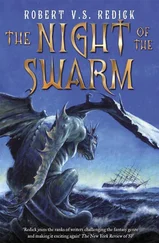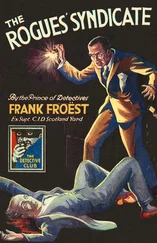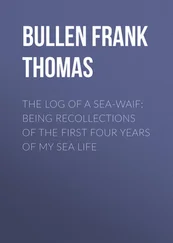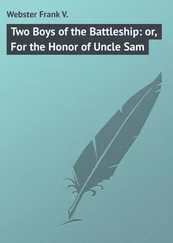Thanks to Bohrmann's efforts, Frost and his team had been loaned the illustrious Polarstern for an expedition to the area. Like the Sonne , the research vessel came equipped with a Victor 6000. The Polarstern was sufficiently large to deter the whales from attacking, and had been rigged with underwater cameras to ensure that any swarms of mussels, jellyfish or other invading organisms were detected in good time. Frost had no idea whether he'd see Victor again once it had been lowered into the water. All manner of equipment was disappearing into the depths. He could only give it a shot and hope for the best. No one opposed the suggestion.
Victor was released from the Polarstern off the west coast of La Palma. Splashdown occurred within sight of the shore. The robot made its way downwards, systematically searching the steep face of the volcano. Then, at four hundred metres, an array of overlapping terraces came into view, jutting out of the rock like a series of balconies. They were covered with sediment.
Victor had found the hydrate deposits that Frost had predicted.
A mass of pink bodies writhed on top: bristly worms with pincer-like jaws.
La Palma, Canary Islands, North-west African Coast
'So why all this activity in the waters of a holiday resort, when the worms could do so much more damage in Japan or back home?' asked Frost. 'The North Sea was densely populated. The American coast is chock-a-block with people and so is Honshu, but the worm colonies in those areas aren't nearly big enough to make a splash. And now we've found worms here, on a holiday island off the north-west coast of Africa. So we ask ourselves why.'
Dressed as usual in a baseball cap and industrial overalls, he was standing high on the western side of the volcanic ridge that stretched across the island. In the north, the famous Caldera de Taburiente, an enormous crater caused by erosion, was ringed with sheer walls of rock, then the mountain ridge continued southwards, the line of volcanic cones extending to its tip.
Frost was accompanied by Bohrmann and two representatives from the De Beers Corporation, a business executive and a technology specialist called Jan van Maarten. They were gathered on a sandy slope with the helicopter parked to one side. From there they looked down on a verdant crater-pocked landscape of awe-inspiring beauty. A long line of peaks towered into the sky. Black trails of lava led down to the shore, dotted with tender green shoots. There were lengthy intervals between the eruptions on La Palma, but the next volcano could erupt at any time. In geological terms, the Canary Islands were still relatively young. As recently as 1971 a new volcano, Teneguia, had made its presence known, erupting near the southern tip of the island, and extending the land mass by several hectares. Technically, the ridge was a single volcano with numerous vents, which was why people tended to refer to the Cumbre ridge as a whole whenever they discussed the volcanism of the island.
'You see, the real question,' said Bohrmann, 'is which areas should be colonised to maximise the damage.'
'You don't really think it could be planned in that detail?' asked the executive. She gave a puzzled frown.
'It's all hypothetical at present,' said Frost, 'but assuming there's an intelligent mind at work here, it's incredibly strategic. In the aftermath of the North Sea catastrophe everyone reasoned that the next disaster would happen in another densely populated industrial area. And, sure enough, worms were present on such sites, but only in small numbers. The obvious explanation would be that the troops, so to speak, were depleted, or that it takes time to create new armies of worms. Our attention is continually being nudged in the wrong direction. Gerhard and I are fairly certain now that the half-hearted invasions near North America and Japan are just a diversionary tactic.'
'But what's the point of attacking the hydrates in La Palmar' the woman asked. 'No one could claim that it's a hub of activity.'
The De Beers Corporation had entered the picture when Frost and Bohrmann had gone in search of existing technology to vacuum up the methane-eating worms. For decades the seabed off the coast of Namibia and South Africa had been scoured for diamonds. Various companies were involved, but the biggest player was the international diamond corporation De Beers, which used ships and offshore platforms to launch its mining operations 180 metres below. A few years previously De Beers had started to develop new ways of mining the seabed at even greater depths, using remote-controlled submersible crawlers that vacuumed up the sand and minerals, transferring them via suction pipes to surface support vessels. The most recent project focused on developing a more flexible system that could operate without the need for horizontal ground. The new technology, a remote-controlled suction pipe, would be capable of scouring vertical surfaces. Theoretically the system would be operational at depths of several thousand metres, but first it would be necessary to build a pipe of that length.
The committee had decided to collaborate directly with the team assigned to the project by De Beers. So far the corporation's two representatives had only been told that their system was of potential use in helping to prevent a worldwide disaster, to which end a suction pipe measuring several hundred metres in length was needed as soon as possible. Frost had proposed a visit to Cumbre Vieja to explain what would happen to humanity, should their mission fail.
'Oh, don't let appearances deceive you,' he said. 'There's plenty of activity here.'
The strands of hair protruding from his cap quivered in the cool sea breeze. The blue sky appeared in the lenses of his shades. He looked like a cross between Fred Flintstone and the Terminator, as his voice carried over the peaceful pine forests.
'We wouldn't be standing here in the first place if volcanic activity two million years ago hadn't blasted the Canaries out of the sea. It may look idyllic, but you shouldn't let it fool you. There's a farming village down there, Tijarafe – a lovely place, sells wonderful quesos dealemmdras . On the eighth of September each year they celebrate the Fiesta del Diablo. A devil runs across the market square, spitting fire and setting off explosions. Why? Because the islanders know the nature of their Cumbre. Fire and explosions are part of natural life here. They know that, and so, too, does the force behind those worms. It knows how the island was created. And if you know how things are made, more often than not you can identify their weak spots.'
Frost took a few steps towards the edge. The friable volcanic rock crunched beneath his Doc Martens. In the distance below, glittering waves broke against the shore.
'In 1949 the sleepy old dog Cumbre Vieja sprang into action with a bang. The eruption came from one of its craters, at the top of the San Juan volcano. It opened up a fault. It's hard to spot with the naked eye, but it runs for kilometres along the western flank of the island, just below where we're standing. It's possible that the rock at the heart of La Palma has been fissured. At the time, a section of the Cumbre Vieja ridge slipped four metres downwards into the ocean. I've been monitoring the area for the past few years. It's highly likely that the next eruption will cause the western flank to break off entirely, owing to the unusually large amount of groundwater trapped within the rock. As soon as a new burst of hot magma enters the volcanic vent, the water will expand and evaporate in an instant. The resulting pressure could easily blast the western flank into the water. It's already been destabilised, and the eastern and southern flanks are pushing against it. Five hundred or so cubic kilometres of rock would collapse into the ocean.'
Читать дальше












